In daily life, electronic audio equipment is closely related to our usual computers, radio and even home theaters, and external audio playback of movie and TV sets. If you are now given a bunch of audio cables and various audio interfaces, but the interface cables will not be connected correctly, then you are really out. The audio interface mainly includes analog TRS interface, RCA interface, XLR interface, digital audio interface AES / EBU interface, S / PDIF interface, RCA \ BNC coaxial interface, optical fiber interface and so on.
When we use electronic products, especially digital audio products, the first thing we often face is the connection. In addition to the power cord that everyone is more familiar with, there are a bunch of dense various audio interfaces. Some people You may not know how to wire. These interfaces are not only different in function, but also have some headaches. Although the functions are different, the appearance is the same. This has caused a lot of trouble for novice users.
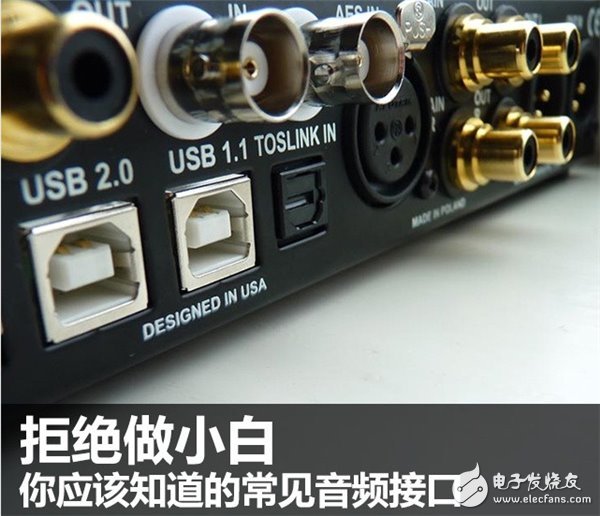
The author has always emphasized that before using digital products, it is necessary to develop the habit of reading the manual. Only by understanding the manual can the function of the machine be understood in actual operation, and unnecessary unnecessary damage to the machine due to misuse can be avoided. damage. However, many people are unwilling to spend time reading the manual now, so when faced with things such as resolving audio interfaces, there will be confusion. In fact, if you often touch these devices, you will gradually become familiar with the audio interfaces that look very complicated. Usually there will be corresponding English labels next to the interface. If you encounter a relatively unfamiliar device and have some new features , You need to read the manual carefully to identify and operate.
This time we introduce some common audio interfaces. What needs to be explained here is that the interface we are talking about actually includes discussions on "interface" and "connector". "Connector" is also commonly referred to as "connector" or "connector". plug". "Interface" defines the physical characteristics of the connection between electronic devices, including the frequency and strength of the transmitted signal, and the type and number of corresponding wires, as well as the structural design of plugs and sockets; and "connector" is physically A device for connecting between devices.
TRS interface of analog audio interfaceSpeaking of the TRS interface, most people may not know what it is at first, but as long as the real thing is in front of you, everyone will know what it is. In fact, the most common thing we see in daily life is the TRS interface. The appearance of its connector is cylindrical, usually in three sizes: 1/4 "(6.3mm), 1/8" (3.5mm), and 3/32 "(2.5mm ), Our most common is the 3.5mm size connector.
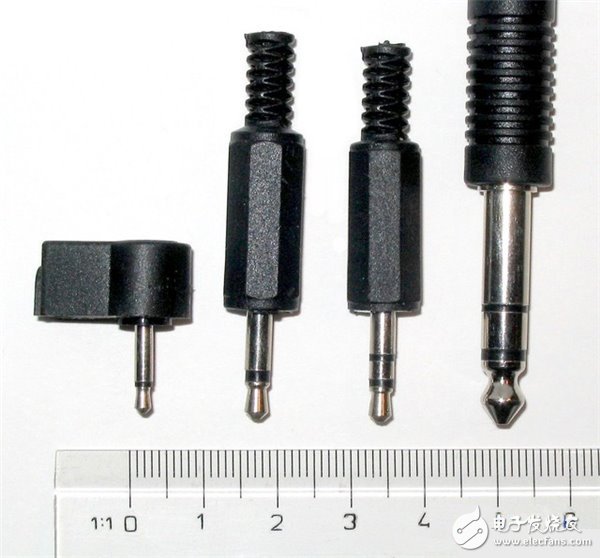
TRS connectors of different sizes
The 2.5mm TRS connector used to be popular in mobile phone headsets, but now it is rare. The headphone jack is basically unified by the 3.5mm jack. The 6.3mm connector is more common on many professional equipment and high-end headphones, but now many high-end headphones are gradually starting to use 3.5mm connectors. The meaning of TRS is TIp (signal), Ring (signal), Sleeve (ground), which represent the three contacts of this joint, and what we see is three sections of metal posts separated by two sections of insulating material. Therefore, 3.5mm connectors and 6.3mm connectors are also known as "small three-core" and "large three-core".
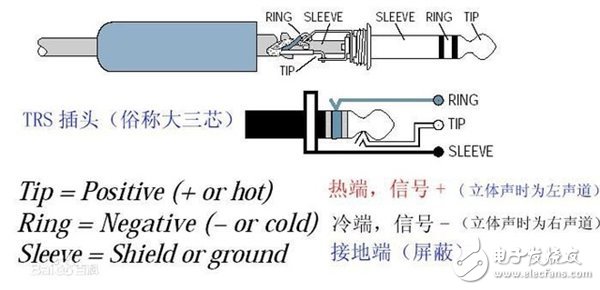
"Big three core" structure
The TRS interface is a round hole, which corresponds to the connector inside, and also has three contacts, which are also separated by insulating material. Some people say that there is no four-core plug? Yes, the four-core plugs we see on headphones or Walkman, the extra core is used to transmit voice signals or control signals. In addition, there is a four-core 3.5mm plug for headphones that is used to transmit balanced signals. The 6.3mm "big three-core" plug can be used to transmit balanced signals or unbalanced stereo signals, which means that it can transmit balanced signals like the XLR balanced interface we will talk about later, but the cost of making such balanced cables is relatively high. High, so it is generally only used in high-end professional audio equipment.
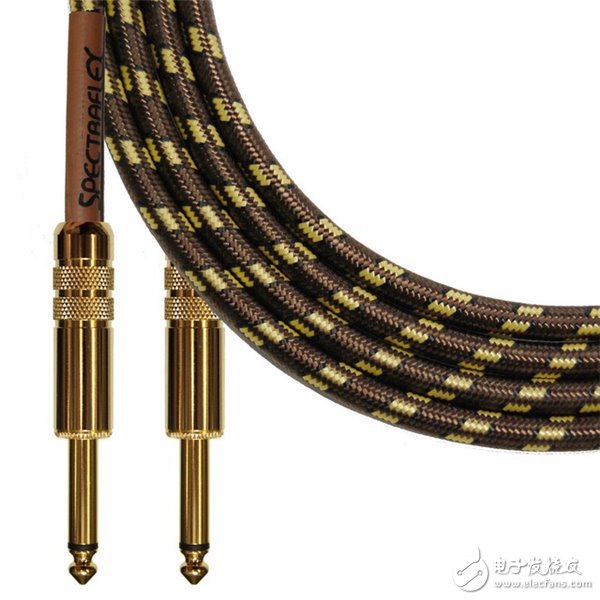
Two-core 6.3mm TRS electric guitar cable
Of course, since the core can be added, the core can also be reduced. The two-core TRS connector can be used to transmit unbalanced mono audio signals. For example, the wire used for an electric guitar is the two-core TRS line. Therefore, from the perspective of the appearance of the TRS interface, we will not know whether it supports balanced transmission; from the perspective of the number of cores, we can not determine whether the TRS connector with four cores or more supports balanced transmission, depending on the device.
RCA interface of analog audio interfaceThe RCA interface is also very common in our daily life, basically on speakers, TVs, amplifiers, DVD players and other equipment. It is named after the English abbreviation of Radio CorporaTIon of America. In the 1940s, the company introduced this interface to the market and used it to connect phonographs and speakers. Therefore, it is also known as Europe PHONO interface. The connector we are more familiar with is called "lotus head".
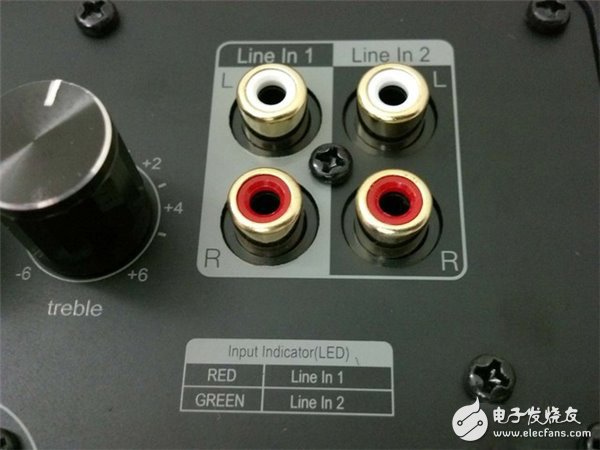
RCA interface is very common in our daily life
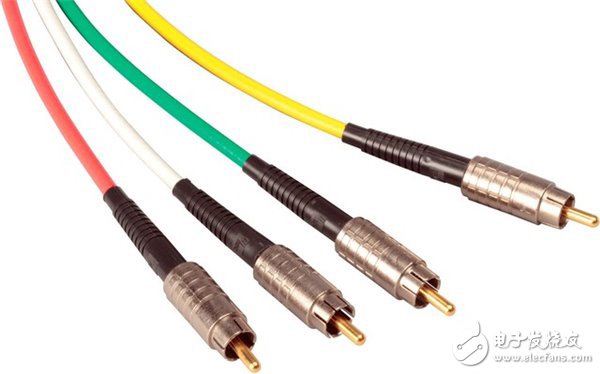
RCA connector called "lotus head"
The RCA interface uses coaxial transmission of signals, the central axis is used to transmit signals, and the contact layer on the outer edge is used for grounding. Each RCA cable is responsible for transmitting the audio signal of one channel. Therefore, according to the actual needs of the channel, the number of RCA cables matching it can be used. For example, two RCA cables are required to set up a two-channel stereo.
XLR interface of analog audio interfaceThe XLR interface is also known as the "Cannon Port", because Cannon Electric, founded by James H. Cannon, was its original manufacturer. Their earliest product was the "cannon X" series. Later, the improved product added a locking device (Latch), so an "L" was added after the "X"; and then a rubber seal was added around the metal contacts of the connector. (Rubber compound), then added an "R" after the "L". People put the three capital letters together and call this connector "XLR connector".
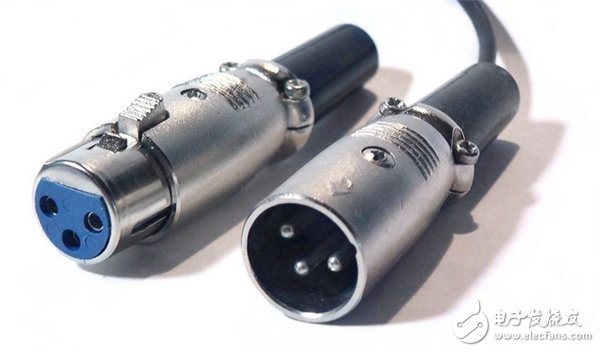
The more common three-core XLR interface
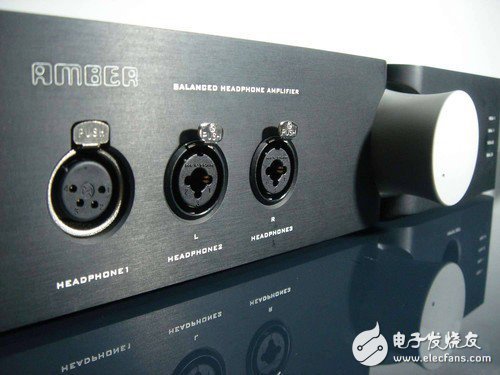
Some amps will provide four-core balanced XLR headphone jacks
The XLR plugs we usually see are 3-pin, and of course there are 2-pin, 4-pin, 5-pin, and 6-pin. For example, on some high-end headphone cables, we will also see four-pin XLR balanced connectors. The XLR interface is the same as the "big three-core" TRS interface and can be used to transmit audio balanced signals. Here we briefly talk about balanced and unbalanced signals. After the sound wave is converted into an electrical signal, if it is directly transmitted, it is an unbalanced signal. If the original signal is inverted by 180 degrees, and then the original signal and the inverted signal are transmitted at the same time, this is a balanced signal. Balanced transmission is to use the principle of phase cancellation to minimize other interferences encountered during the transmission of audio signals. Of course, the XLR interface is also the same as the "big three-core" TRS interface, which can transmit unbalanced signals. Therefore, from the interface, we can't see which signal it is transmitting.
AES / EBU interface of digital audio interfaceIn terms of digital audio interfaces, we are actually talking more about transmission protocols or standards. In terms of the physical appearance of the interface, it is difficult to see what type of interface it is. Let's talk about AES / EBU first.
AES / EBU is the abbreviation of Audio Engineering Society / European Broadcast Union, which is now a popular professional digital audio standard. It is a serial bit transmission protocol based on a single twisted wire pair to transmit digital audio data. Without equalization, data can be transmitted over a distance of up to 100 meters. If equalized, data can be transmitted over longer distances.
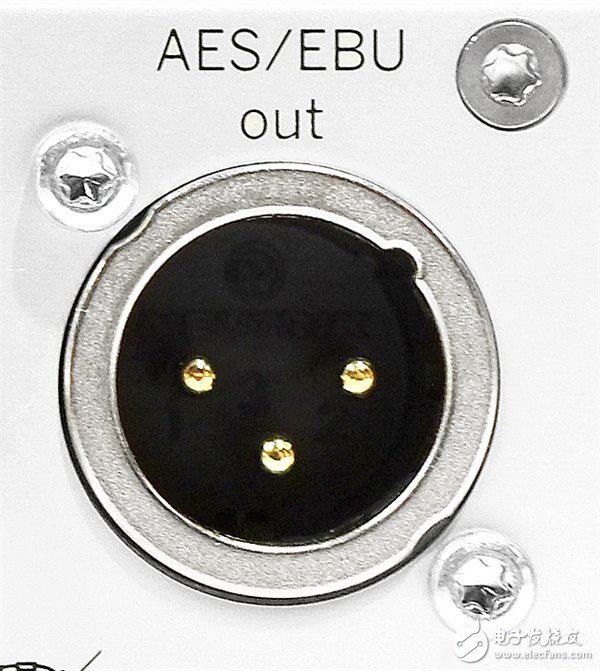
The most common AES / EBU physical interface using a three-core XLR interface
AES / EBU provides two channels of audio data (up to 24-bit quantization). The channels are automatically timed and self-synchronized. It also provides the transmission control method and the status information (channel status bit) and some error detection capabilities. Its clock information is controlled by the transmitting end and comes from the bit stream of AES / EBU. Its three standard sampling rates are 32kHz, 44.1kHz, and 48kHz. Of course, many interfaces can work on different sampling rates.
There are many physical interfaces of AES / EBU, the most common is the three-core XLR interface, which is used for balanced or differential connection; in addition, there is an audio coaxial interface using RCA plugs, which will be discussed later, for single-ended unbalanced Connection; and use fiber optic connectors for optical connections.
S / PDIF interface of digital audio interfaceS / PDIF is the abbreviation of Sony / Philips Digital Interconnect Format. It is a civilian digital audio interface protocol developed by Sony and Philips. Due to its widespread adoption, it has become the de facto standard for civilian digital audio formats. S / PDIF and AES / EBU have slightly different structures. Audio information occupies the same position in the data stream, making the two formats compatible in principle. In some cases, AES / EBU professional equipment and S / PDIF user equipment can be directly connected, but this practice is not recommended because there are very important differences in electrical specifications and channel status bits. When mixing protocols May have unpredictable consequences.
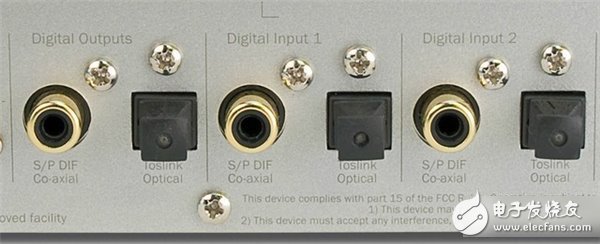
S / PDIF interface with RCA coaxial and optical fiber interface
There are generally three types of S / PDIF interface, one is RCA coaxial interface, the other is BNC coaxial interface, and the other is TOSLINK optical fiber interface. In the international standard, S / PDIF requires BNC interface 75 ohm cable transmission. However, due to various reasons, many manufacturers frequently use RCA interface or even use 3.5mm small stereo interface for S / PDIF transmission. Became a "civilian standard". Later we will talk about the coaxial interface and fiber interface.
Coaxial interface of digital audio interfaceThere are two types of coaxial interface, one is RCA coaxial interface, and the other is BNC coaxial interface. The appearance of the former is no different from the analog RCA interface, while the latter is a bit similar to the signal interface that we commonly see on TVs, and it has a locking design. The coaxial cable connector has two concentric conductors, the conductor and the shield share the same axis, and the impedance of the wire is 75 ohms.
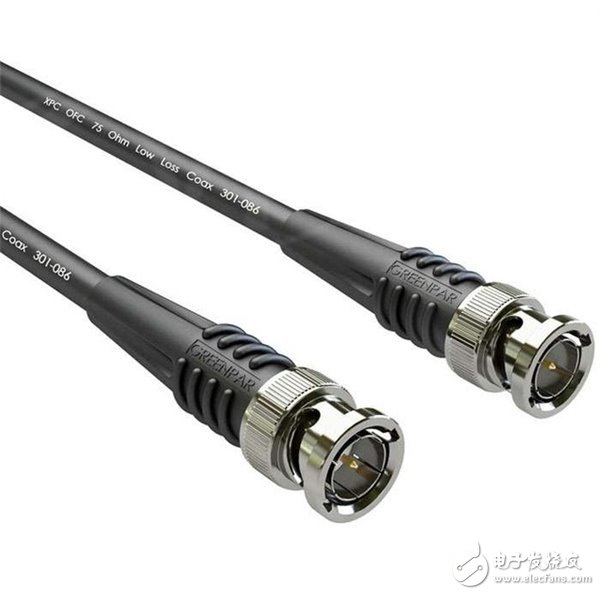
Coaxial cable with BNC coaxial interface
The coaxial transmission impedance is constant and the transmission bandwidth is high, so the audio quality can be guaranteed. However, although the appearance of the RCA coaxial interface is the same as the RCA analog interface, it is best not to mix the cables. Because the RCA coaxial cable is fixed at 75 ohm impedance, the mixed cable will cause unstable sound transmission and degrade the sound quality.
Optical fiber interface of digital audio interfaceThe English name of the optical fiber interface is TOSLINK, which is derived from the technical standard formulated by Toshiba (TOSHIBA), and is generally marked as "OpTIcal" on the equipment. Its physical interface is divided into two types, one is a standard square head, and the other is a round head that is similar to 3.5mm TRS connectors on portable devices. Because it transmits digital signals in the form of optical pulses, from a technical point of view, it is the fastest transmission speed.
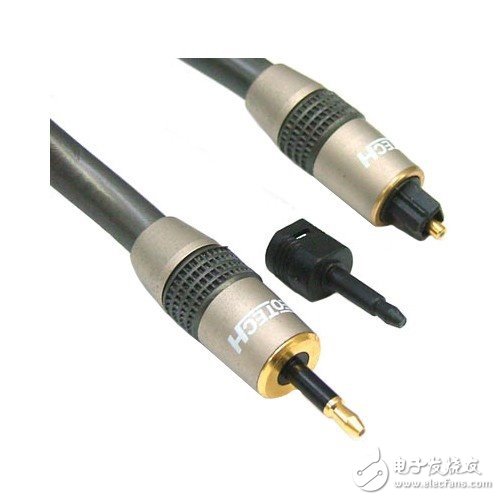
Fiber optic connectors with square and round ends
The optical fiber connection can achieve electrical isolation, prevent digital noise from being transmitted through the ground wire, and help to improve the signal-to-noise ratio of the DAC. However, because it requires a light emitting port and a receiving port, and the photoelectric conversion of these two ports requires a photodiode, there can be no close contact between the fiber and the photodiode, which will cause digital jitter-like distortion, and this distortion is superimposed of. Coupled with the distortion in the photoelectric conversion process, it is much worse than coaxial in terms of digital jitter. As a result, fiber optic interfaces are beginning to fade out of sight.
Write at the end:This time we have introduced some of the more common types of audio interfaces. In fact, as technology continues to advance, new audio standards and protocols have been developed, such as I2S, CobraNet, EtherSound, Dante, AVB, etc., but these Many are the manufacturer's protocol standards, and the realization of physical interfaces can not be unified in a variety of ways, those with HDMI interfaces, those with coaxial interfaces, those with RJ45 interfaces, etc. Due to space limitations, they will not be further introduced.
Our company`s current transformers have high precision,wide range,small volume and good linearity that can be used to the field of electronic watt-hour meter, electric energy metering, electronic detection.
Performance
â—Power frequency insulation strength:The insulation between the primary winding and the secondary winding and the ground part of the CT can bear 4kV power frequency voltage for 1minute
â—Interturn insulation strength:The secondary open circuit, the primary winding through the rated current 1min, no inter-turn damage in the transformer
â—The deviation is better than the industry standards and national standards
Zero Phase Residual Ct,Small Type Current Transformer,Stable Current Transformer,Good Residual Current Transformer
Anyang Kayo Amorphous Technology Co.,Ltd. , https://www.kayoamotech.com